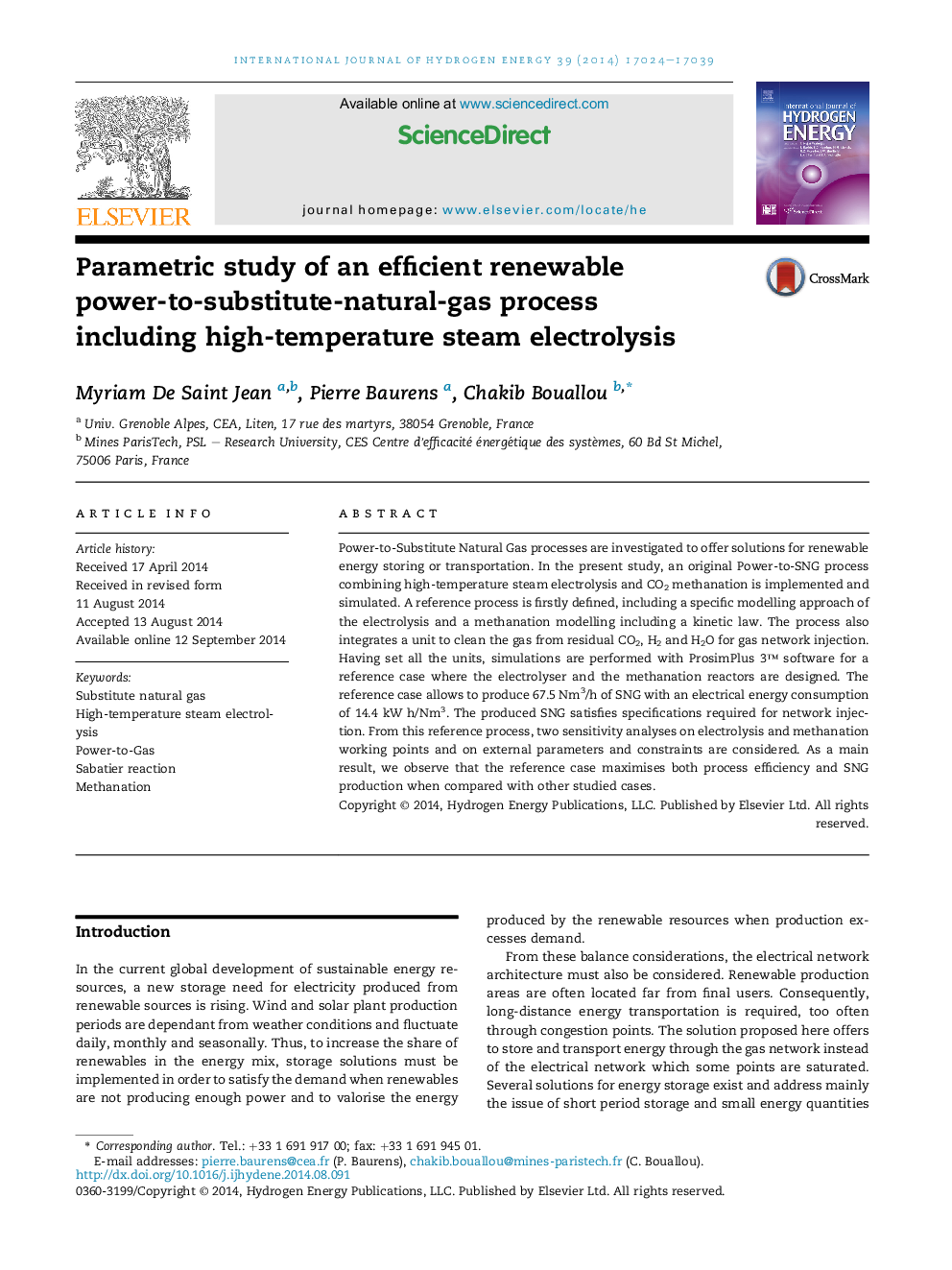| Article ID | Journal | Published Year | Pages | File Type |
|---|---|---|---|---|
| 1272158 | International Journal of Hydrogen Energy | 2014 | 16 Pages |
•A power-to-gas process including a high temperature electrolysis unit is simulated.•The process efficiency is 74.5% based on gas HHV.•The highest energy consumption of the process is for the electrolysis unit.•Produced gas satisfies the specifications required for injection into the French network.
Power-to-Substitute Natural Gas processes are investigated to offer solutions for renewable energy storing or transportation. In the present study, an original Power-to-SNG process combining high-temperature steam electrolysis and CO2 methanation is implemented and simulated. A reference process is firstly defined, including a specific modelling approach of the electrolysis and a methanation modelling including a kinetic law. The process also integrates a unit to clean the gas from residual CO2, H2 and H2O for gas network injection. Having set all the units, simulations are performed with ProsimPlus 3™ software for a reference case where the electrolyser and the methanation reactors are designed. The reference case allows to produce 67.5 Nm3/h of SNG with an electrical energy consumption of 14.4 kW h/Nm3. The produced SNG satisfies specifications required for network injection. From this reference process, two sensitivity analyses on electrolysis and methanation working points and on external parameters and constraints are considered. As a main result, we observe that the reference case maximises both process efficiency and SNG production when compared with other studied cases.
